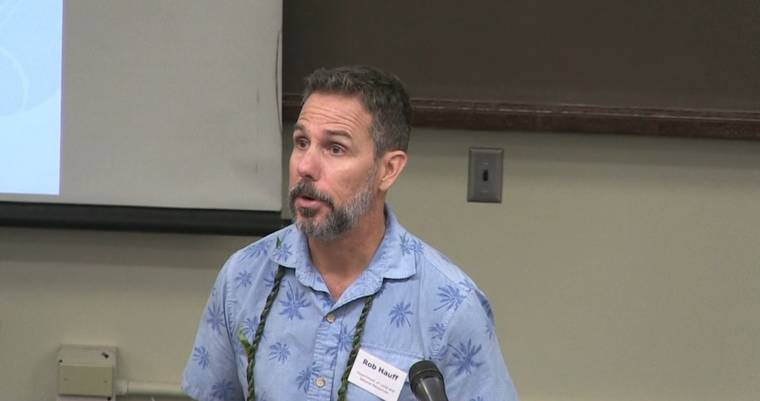An update to the state’s strategic response plan for rapid ohi‘a death requests more than $4 million in funding each year for five years.
The plan, which was introduced Monday after being drafted by a team of officials from multiple state and federal agencies, calls for an increase in annual funding for 2020 through 2024 in order to support further research into the disease and increase response efforts as it spreads to other islands.
The disease — caused by two species of infectious fungal spores — was discovered last decade and was originally confined to the endemic ohi‘a trees on the Big Island. In the last several years, however, infected ohi‘a trees have been discovered on Maui, Kauai and Oahu, turning the fight against the disease into a statewide effort.
Rob Hauff, state protection forester with the state Department of Land and Natural Resources, said the previous version of the plan had called for $3.2 million annually for the last three years, but was only able to secure between $2 million and $2.5 million, depending on the year.
“Yes, it is an increase from before, but we hope that we can at least get close to the amount we’re asking for,” Hauff said.
Of the requested $4.08 million, $1.44 million would be allocated to managing and controlling the disease across all affected islands. Hauff said a priority is preventing the disease from spreading to Kauai’s core ohi‘a forests, which have, so far, avoided infection.
However, the increased funding also will allow the several state and federal agencies combating the disease to conduct further research and investigate new preventative measures.
For example, Hauff said that, thanks to research conducted over the last three years, dogs are able to detect the infection in ohi‘a trees earlier than researchers currently can. Currently, infected trees can only be identified after they have already died. With an annual allocation of $70,000, the U.S. Forest Service can establish a program that trains dogs to detect the infection on a wider scale.
Other possible new methods include using image-recognition software to identify dead ohi‘a from a given photograph, allowing more land to be surveyed at once, or new measures to detect early signs of infection before the trees have died.
The smallest portion of the proposed budget is a $300,000 allocation to the USFS, the University of Hawaii and DLNR for disease resistance and restoration techniques.
“We’re just at the very beginning of resistance and restoration research,” Hauff said. “Resistance is going to be a 10-year project … same with restoration. They’re very long-term projects, and they’re very early.”
Funding for the strategic plan will be requested during this year’s legislative session, which begins Wednesday.






